Golf course architect Mike Dasher starts the golfer out with a formidable par 4 measuring 392 from the blue tees. This slight dogleg left has a generous fairway and not a single bunker guarding the green. A good starting hole if you didn’t have time to warm up on the range.
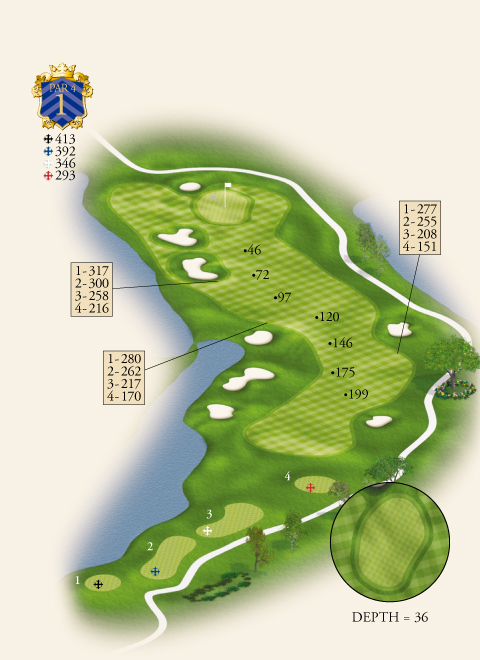
This par 5 has a wide fairway and will accept a less-than-perfect drive. The second shot requires strategic aim down the left side to avoid the waste bunker on the right. The third shot will be a short iron. Drain the putt and move on with a birdie.

The key to a good score on this par 4 is the drive. You must navigate the tee shot into a fairway that is guarded by bunkers on both sides of the fairway. The second shot can be a mid to short iron to a green that has a false front. Hit it short and the ball will be rejected and a chip shot will be necessary. Par is a good score.
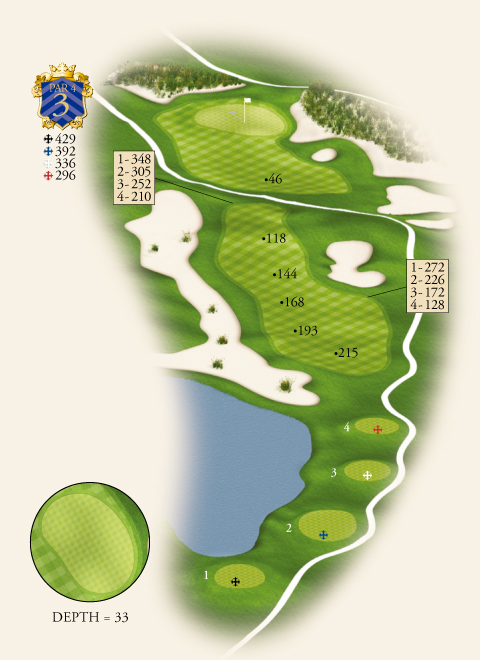
This par 3 has a large green and depending on pin placement and prevailing winds, the club selection could change drastically from day to day. Pick the wrong club and you could easily be in 3-putt range.

The shortest par 4 on the course could well be the most fun to play. A hazard guards the left side in front of the green. Options include hitting the tee shot to the green or the more conservative approach of laying up with a hybrid or medium iron leaving a short wedge shot. During a competition, a birdie is a must on this hole just to keep up with the field.

The course begins to show its teeth on this next par 4. The tee shot should be hit down the right center to get a favorable kick toward the fairway. The second shot can vary from a fairway wood to a mid iron depending on the length of the drive. The shot to the green must avoid an environmental area on the left side. The green is pure Mike Dasher. It has undulations that could have you mumbling to yourself as you walk off the green to the next hole.

This is a visually intimidating par 4 dogleg right with a hazard down the right side. The key is to formulate a plan on how much of the water to cut off on the tee shot. A miscalculation to cut off too much water and the ball will drown. If you are too conservative the ball will fly through the fairway into treacherous rough and you will have no chance to reach the green in regulation. Both the gambler and risk taker will enjoy this hole.

At first glance, this picturesque par 3 seems rather benign. The slope and undulation of the green make this hole more challenging than first meets the eye. Keep the ball below the hole or a 3 putt will happen in a blink of an eye.

This par 5 measures 550 yards from the back tees. The tee shot must avoid water to the left and bunkering to the right. The ideal second shot is hit toward the right side of the fairway to set up an easy third shot to the green. Miss hit your second shot to the left and risk going into the water or complicating your third shot to the green. Par is a good score- birdie is better.

This par 4 is a dogleg left. Avoid the left side of the fairway, as there is plenty of room on the right side. The perfect second shot is a high-trajectory iron that will land softly on this firm green. Par is likely.

Need to make up ground on the competition? This short par 4 gives you that opportunity. Keep the drive in the fairway and the second shot will be no more than a wedge. Drain the birdie and relish the honors on the next hole.

A beautiful hole that will remain totally undisturbed, as it looks today, this par 3 can play difficult. It is not unusual to see families of deer disappearing into the woods. Water comes into play on this hole if the ball goes long left or short left. Don’t let a left pin placement get you in trouble. Aim for the middle of the green and give yourself a putt for birdie.
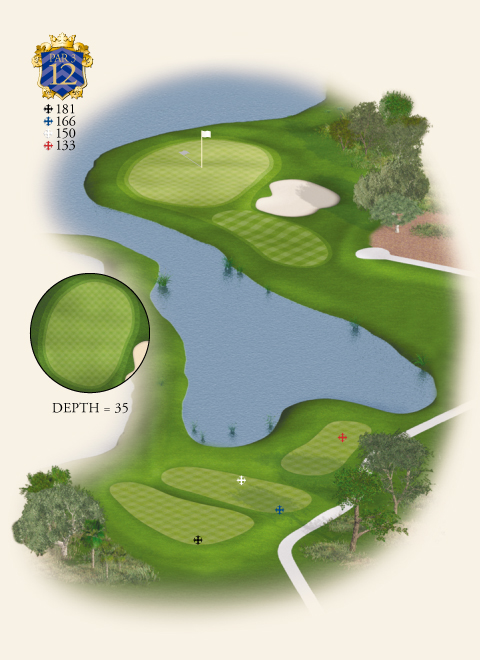
As you drive up to the tee on this hole, look for the family of otters who live in the waters to the left of the tee. The shortest par 5 on the course, this hole is a long hitters delight. Reaching the green in two on any given day is possible. Don’t get too greedy on the approach shot to the green as water does come into play on the left side.

On any given day, this hole can play like a bear. This 400+ yard par 4 will be the turning point of many friendly matches as well as club championships. The tee shot on this hole could be the most demanding shot you face on the entire golf course. Where this tee shot is hit, will determine your chance of reaching this hole in regulation. Take par and run to the next tee.
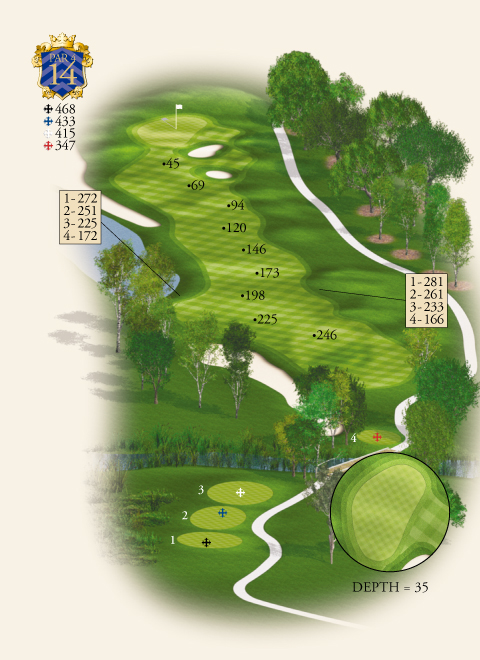
The longest par 5 and one of the most beautiful holes on the course, this hole will make you earn your score. Bomb a tee shot and hit your second shot carefully in order to navigate the water hazard on the left and tree lined fairway on the right. If all is executed properly, you will find yourself with no more than an 8 iron for your third shot to the most diabolical green on the course. Keep the ball below the hole or pay the price!

From the black and the blue tees, this scenic hole can beat you up if the drive is not centered in the fairway. A beautiful but demanding hole, this par 4 can be reached easily in regulation from the lower tees but the hazard does come into play on every shot to the green.

This hole is a great example of what Florida must have looked like in 1513 when the Spanish explorer Juan Ponce de Leon arrived on the peninsula. Don’t get too nostalgic on this par 3 and go for the pin no matter where it is located on the green.
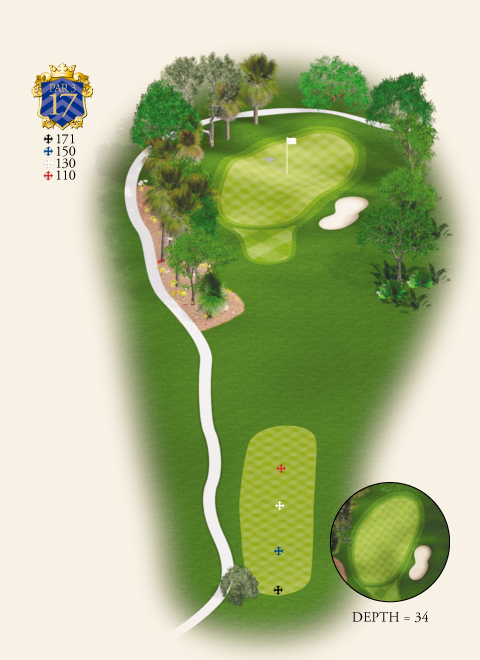
The home hole has a great view of the clubhouse. Aim the tee shot down the left side as the fairway slopes right toward the water hazard. Water can come into play on every shot on this hole. Pick the right club for the shot to the green, as there is a large swale on the front right side of the green. Make the birdie putt and collect your winnings in the grillroom!


